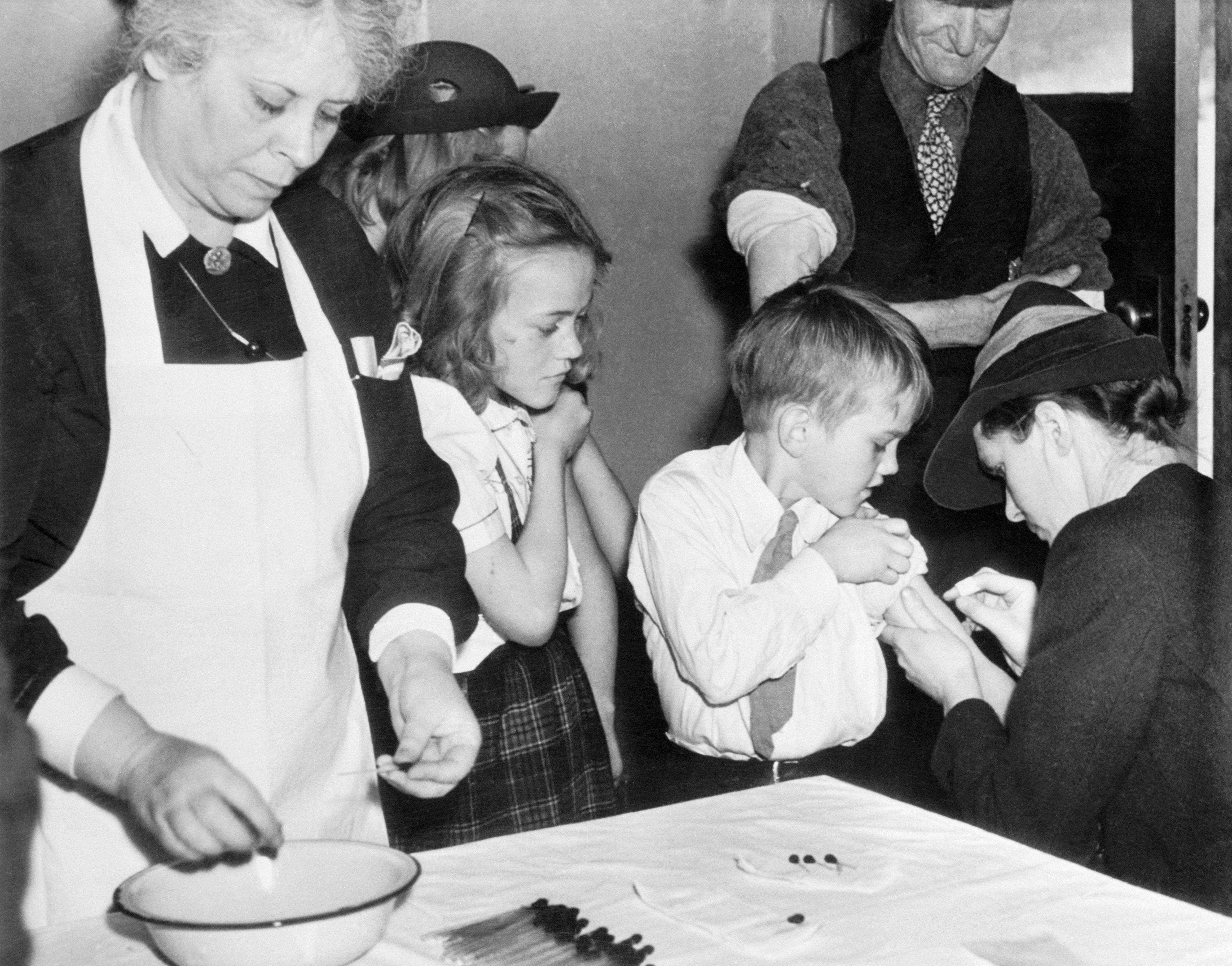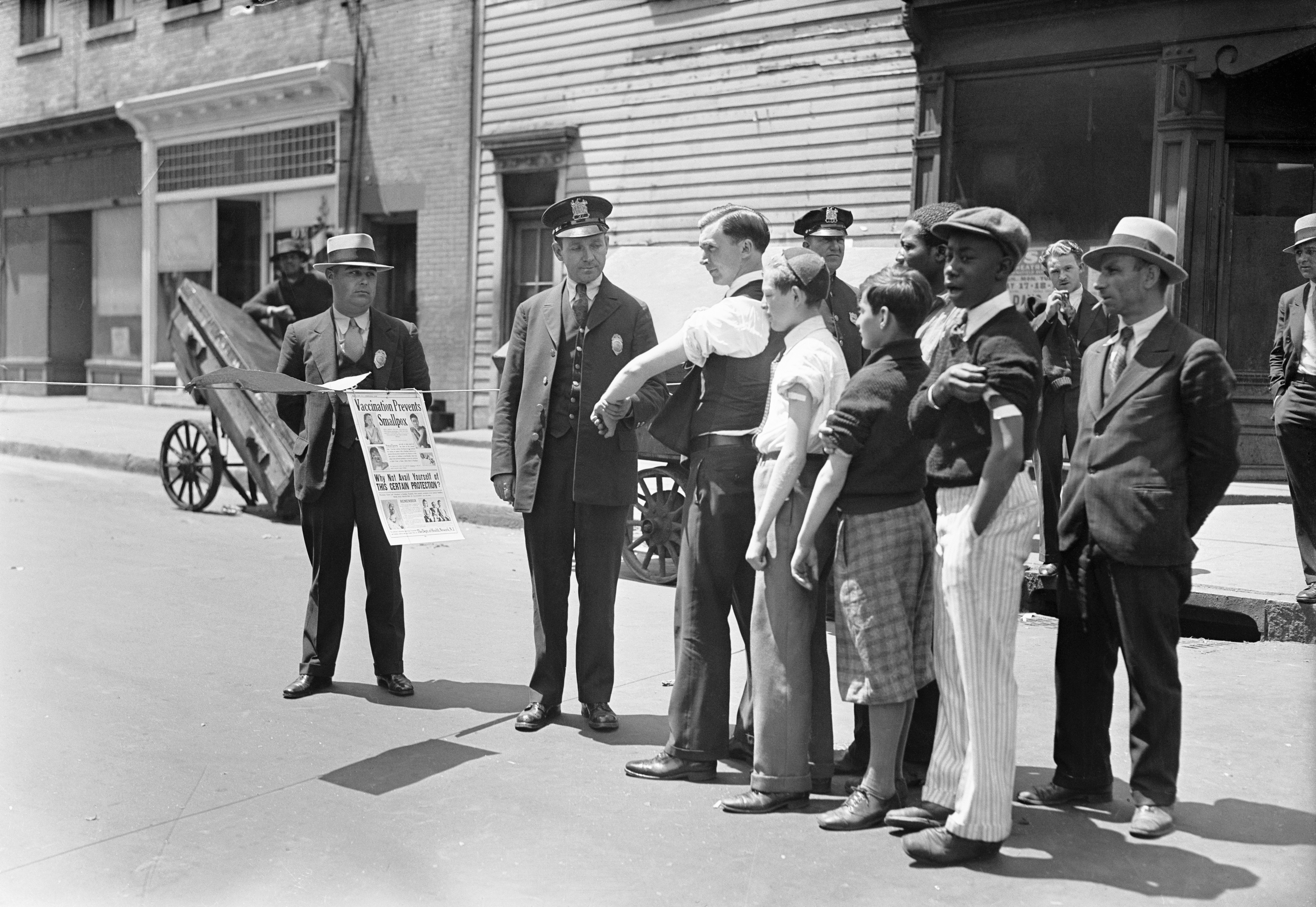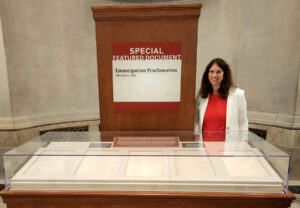From 1899 to 1905, in the throes of a deadly smallpox outbreak, U.S. government health officials confirmed 205,893 cases of smallpox, yet some infectious disease experts estimate that that number may have been five times as high.
At the turn of the 20th century the phrase, “Show a scar” became typical for anyone congregating in a public space — whether it be work, a restaurant, or a school.
The smallpox vaccine, first introduced in the 18th century by British doctor Edward Jenner, was administered not by a syringe, but by scoring the skin of the upper arm and then swabbing small amounts of the smallpox virus into the lesion. The wound would then blister and scab over before eventually leaving a distinctive scar.
“Americans treated the smallpox scar as a documentation of vaccination,” writes Time, “or a sort of early vaccine passport.”
As a series of outbreaks coursed through the country, many states authorized compulsory vaccinations. Others relied on businesses to make the vaccine a condition of employment.
“No person be allowed to enter the employ of, or work in, a lumber camp who can not show a good vaccination scar,” Maine’s government proclaimed in 1903.
In 1913, Baltimore health officials decreed that failure to get vaccinated could result in a $10 fine, jail time, or both.

While a physical scar from the smallpox inoculation made it easier to identify those vaccinated, a fair share of Americans remained wary of the vaccine.
In 1904, the New York Times wrote that “The long struggle of the New York Board of Health to keep smallpox in good control has been in part defeated by public apathy, but still more by reluctance to recognize the conspicuous advantages of immunity conferred by vaccination.”
That same year, in the landmark U.S. Supreme Court case of Jacobson v Massachusetts, Pastor Hennin Jacobson argued that “compulsion to introduce disease into a healthy system is a violation of liberty.”
The Supreme Court upheld the Cambridge, Massachusetts, Board of Health’s authority to require the smallpox vaccination, with Justice John Marshall Harlan writing: “The good and welfare of the Commonwealth, of which the legislature is primarily the judge, is the basis on which the police power rests in Massachusetts upon the principle of self-defense, of paramount necessity, a community has the right to protect itself against an epidemic of disease which threatens the safety of its members.”
Like the reasonably easy to procure fake COVID-19 immunization cards of present day, newspapers of the time were full of stories about young men and women forging their scars — some by painfully exposing a patch of skin to nitric acid to produce the same nickel-sized scar.
Yet those citizens remained on the fringe, as far more Americans began to acquiesce rather than endanger their employment, mobility, or their children’s education, according to Time.
By the middle of the 20th century — aided by decades of widespread inoculation rates — the United States virtually eradicated the threat of smallpox. State efforts to impose vaccination statuses also set the precedent that most student-age children be vaccinated against diseases such as measles, polio, and pertussis.
While not exactly a record on paper, the physical scar of the smallpox vaccine was the first successful “vaccine passport” of sorts to help curb one of the deadliest epidemics of the 20th century.





